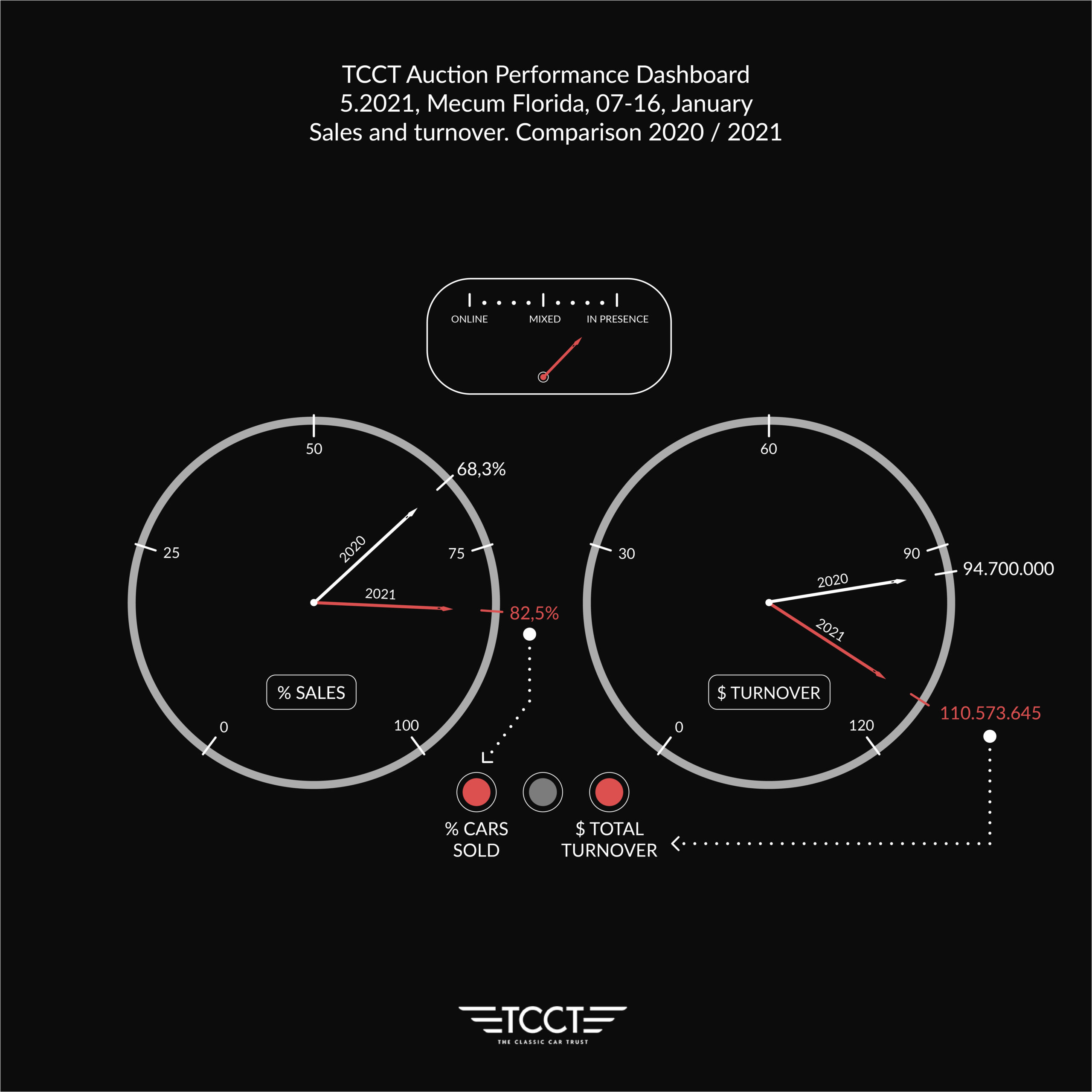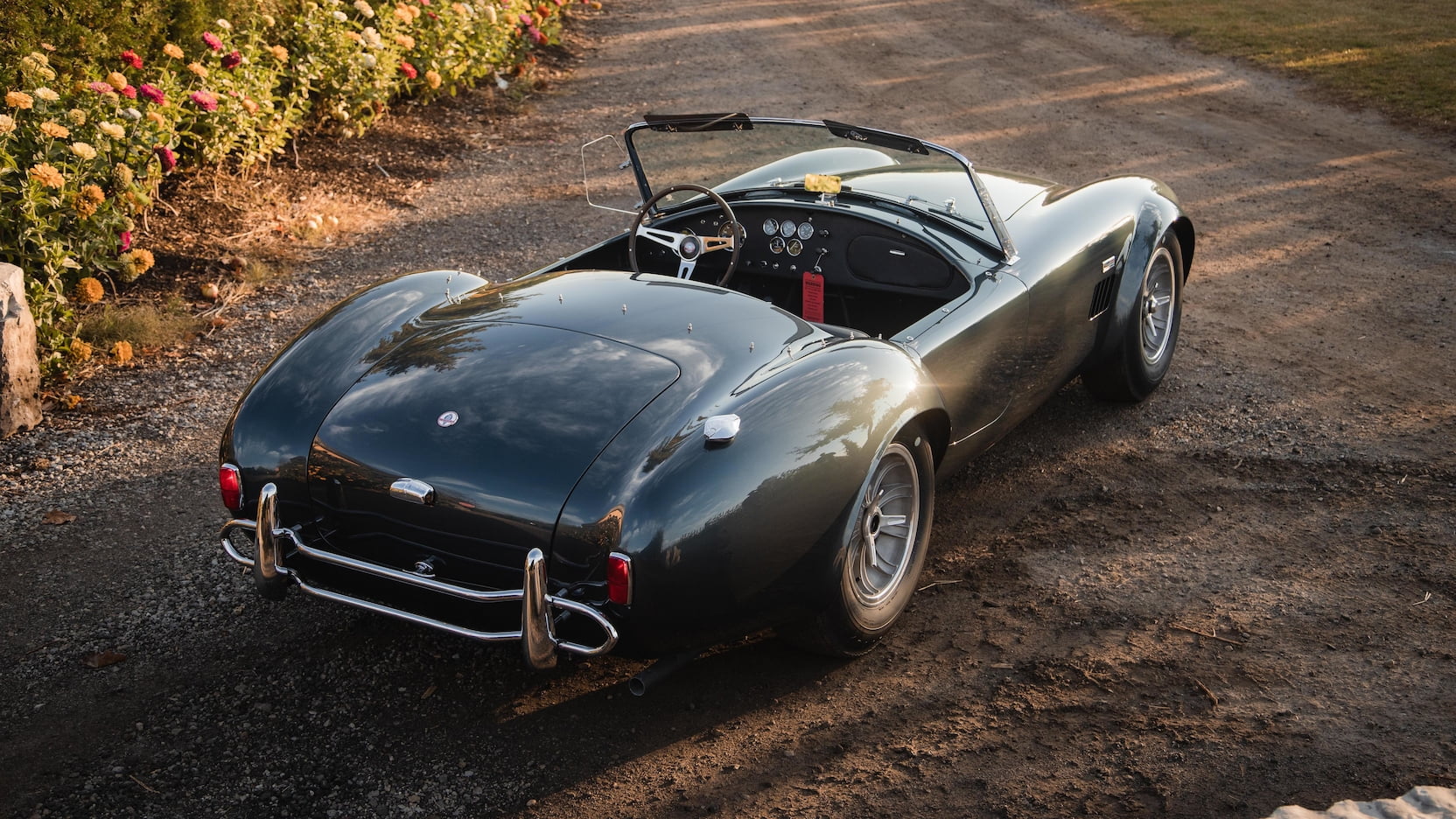Mecum auction. A spark of enthusiasm
A stunning sales success in Florida. Data and our thoughts.
Cliff Goodall’s view
Photo credit: Mecum
One hundred and ten million dollars in sales truly is a breath of fresh air. The Mecum auction in Florida was the most invigorating one we’ve seen in quite some time. With $110,573,645 in takings from cars alone, this sale is the first to exceed the $100 million threshold in the last 12 months and is a sharp rise (+16.7%) over the $94.7 million registered in January 2020, what’s more with 25% fewer cars on offer (2,200 versus 2,946). And there’s one more thing to keep in mind: at the time, the coronavirus was a disease that was confined to Wuhan.
The sales percentages also rose: from 68.39% (equivalent to 2,015 cars changing hands) last year to 82.63% in 2021 (1,818 cars sold).
So how exactly can we interpret those numbers? In my view, in three ways: Mecum benefitted from the choice to move other auctions to the spring, primarily Barrett-Jackson’s flagship auction.

My second observation is that this auction was a physical one, with the correct distancing and sanitization, but with the incomparable pleasure of meeting and fighting it out in the same ring. The third point, unquestionably, is the positive psychological effect of the news that the vaccine is on its way, the so-called revenge spending that more or less means: “there’s only one life, let’s not think about our pension fund, let’s concentrate on our happiness fund” and many in Florida treated themselves to the car they would never have gone for before.
Looking for some examples of what certain sales have shown us? We have more than a few for you:

The top lot in every sense was the 1965 Shelby Cobra 427 chassis CSX3178. Delivered new to Carroll Shelby who kept it until his passing in 2012. In 2016, the current owner commissioned a full concours restoration at the Legendary Motorcar Company. The price? $5,940,000, or somewhere near 332% more than a similar example that went for $1,375,000 but just half the $13,750,000 paid for the Cobra prototype sold a couple of years ago. On this basis and as a unique car, I believe that the price paid is a good deal for those who bought it.

I’ll let you in on a secret: I’ve had a gripe for years. How much is a Plymouth Hemi Cuda worth? Why was it that prices danced between $150-200,000 to $600-800,000 in the golden years? It seems incredible but the difference is due to the year of production: in 1970 they produced 652 examples while in 1971 just 107, consequently the price is inversely proportional even if the logic has difficulty adding up. But these are the facts: at Mecum, a 1970 V-Code convertible was sold for $237,250 while the same model and version from 1971 changed hands for $962,500 (+305%). The charm of mystery?

In the midst of these treats, however, I would be “happy” with the 2000 Honda S2000 Convertible. Its 2-litre V-Tec that howls out 240 hp at 8,000 rpm as you scream with joy while having the time of your life. Sold for $30,800, it’s the classic car to put in the garage for a few years full of unforgettable driving memories while also making a great investment.

I will close with some more good news: one of the icons of historic motoring, the Mercedes-Benz 300SL Roadster. The silver 1957 example with red interior, an impeccable restoration and an originality certificate from Mercedes, was sold for $1,210,000, which positions it in the upper regions of the alloy/disc brake versions. But it had neither an aluminium engine, nor disc brakes (two characteristics that increase value by 30%) and hence became the most expensive car with these specifications since May 2018. After a sluggish period, which we pointed out on several occasions, the 300SL Roadster receives a welcome price hike. Could it be that the market pandemic is also coming to the end of the tunnel?
